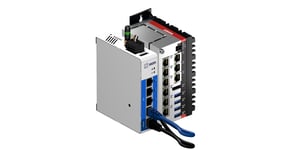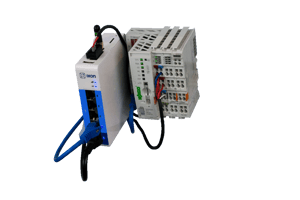- Home
- Knowledge hub
The importance of Edge Computing in manufacturing
2 min. read
Shelly Boom
“Industry 4.0 has introduced machines and plants that produce large amounts of data. Edge computing provides the next step because it allows data to be processed and analyzed with tools derived from Information Technology, such as Industrial PCs, GPUs, Artificial Intelligence, and computer vision.
The term edge indicates where the data processing takes place, which means close to the source that generates the data, such as a sensor or PLC. In fact, computing devices are located at the edge of the machine or in the manufacturing plant. This feature has important advantages:
Edge computing thus stands as a set of technologies to transform collected data into information that companies can use to optimize processes and make strategic decisions.”
“When we talk about data analysis, we refer to statistical information derived from large datasets. These are then applied to real-time data to perform checks or predict the outcome of a process. Maintenance and quality control are processes that benefit from edge computing. To this end, minimizing unplanned downtime is critical."

"By equipping components that can generate data, mathematical models can be created regarding their state. By comparing real-time data with these models, the health of the component is inferred and the time remaining before failure is estimated.”
“Speaking of quality control, this is often done by visual inspection. Edge computing is also applicable here because images are data that can be processed into information. By equipping a machine with an image detection system, it’s possible to automate and speed up the detection of manufacturing defects. The system compares a newly produced part with the model built on a set of example images. If a part does not match the model, the machine automatically discards it.
The potential of edge computing is even greater. It enables the evolution of processes from which large datasets can be collected, transforming them from reactive to predictive and from manual to automated.”
“To implement successful edge computing projects, companies must have two focuses.
The first is related to knowledge. It is necessary to set the correct goal, collect meaningful data and analyze it with appropriate tools and techniques. To do this requires professionals skilled in production processes and analytical tools. One challenge in this regard is to anticipate that multiple rounds of data collection and analysis will be required before the set goal is achieved.
The second focus is on infrastructure management, referring to devices, operating systems and applications. Edge computing increases the complexity of a machine or manufacturing facility. Increased complexity increases security risks and the difficulty of maintenance. It is essential to implement a system that is constantly monitored and secure. This translates into the implementation of dedicated and segmented networks, constant monitoring of equipment status and changes, and the ability to update and modify systems through a centralized system.
Manufacturing companies that want to adopt edge computing must begin a journey to digital maturity that also includes acquiring knowledge and skills derived from Information Technology.”
Discover how machine builders can securely collect data into their Industrial IoT platform with IXON’s Edge gateways.
Receive the latest IXON product updates, new features and industry insights directly to your inbox through our monthly newsletter, and stay on top of market trends and insights to improve your service strategy.



Receive monthly IXON's product updates and industry insights.
Explore what IXON can do for you in a 1:1 session.